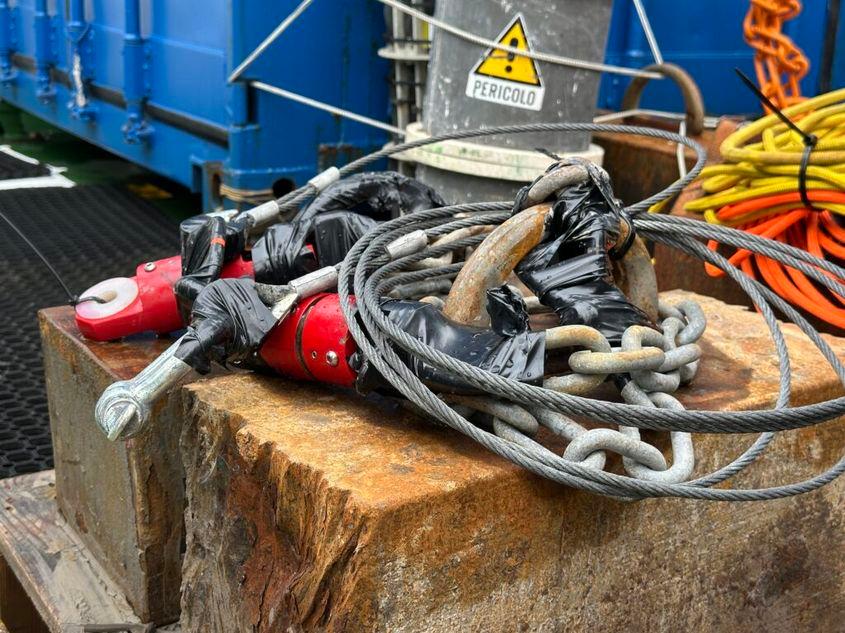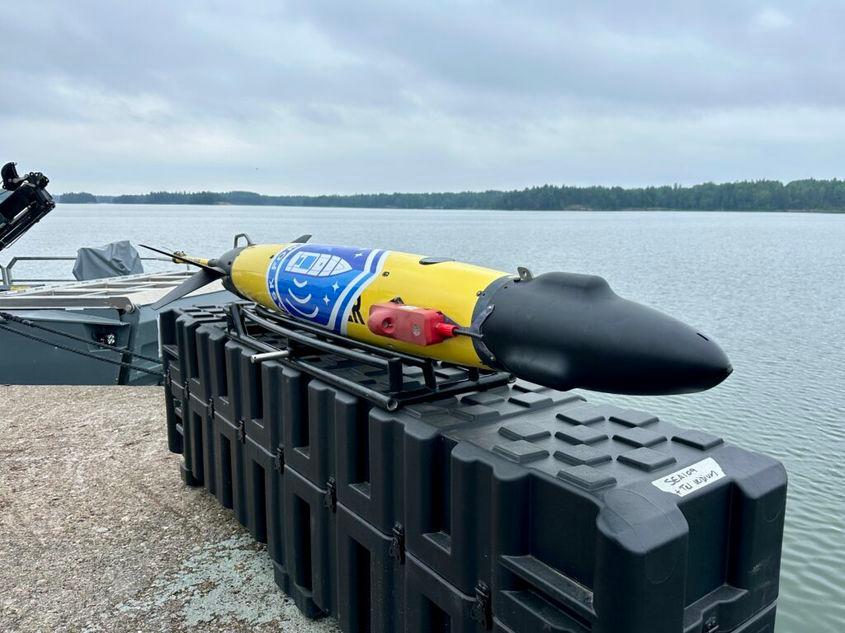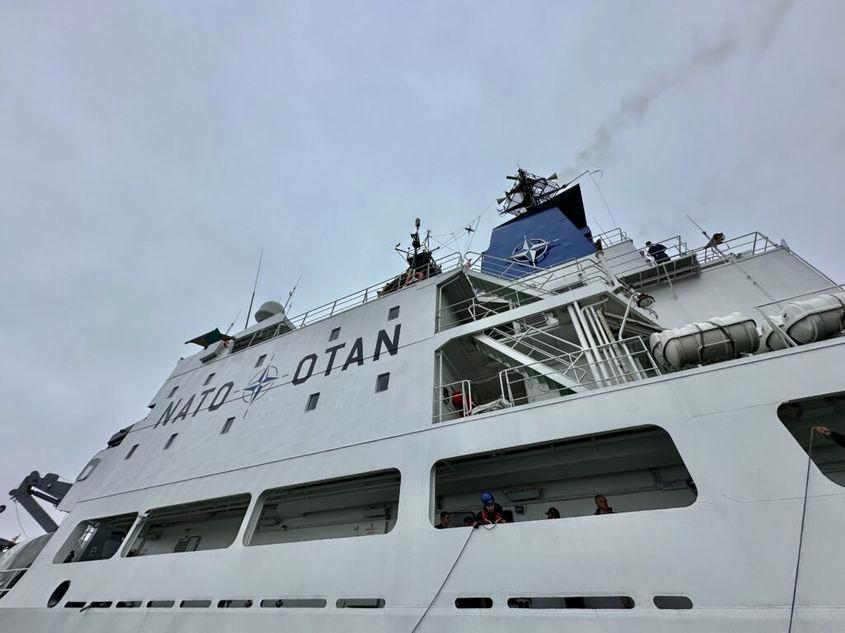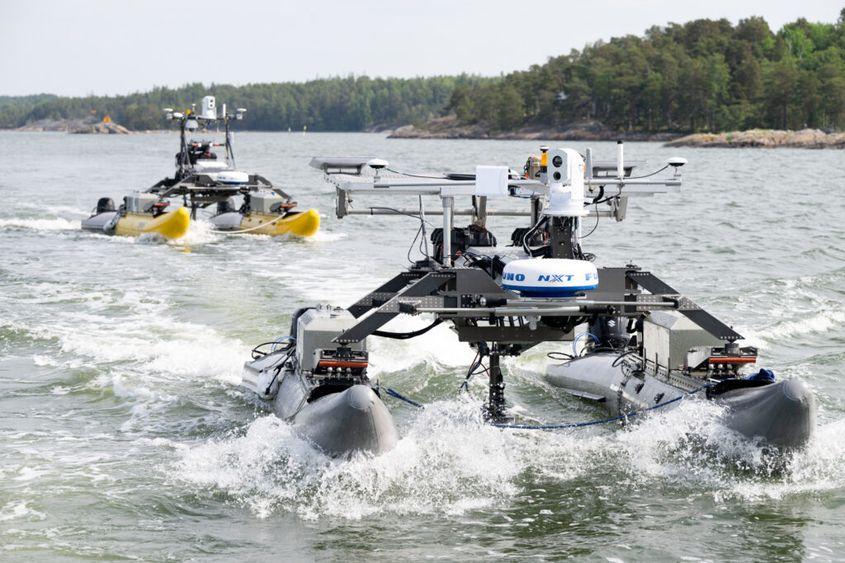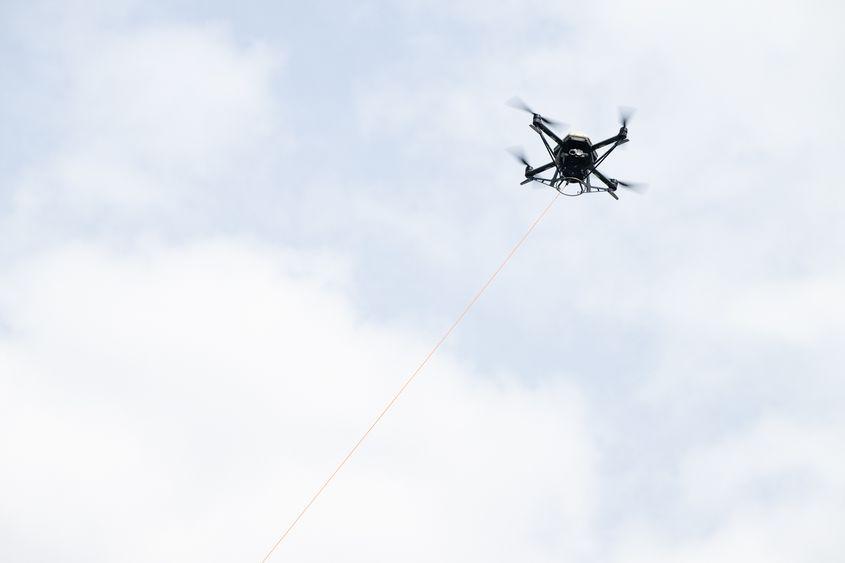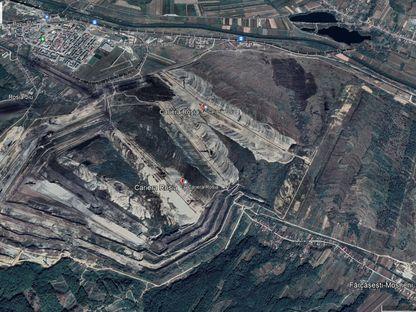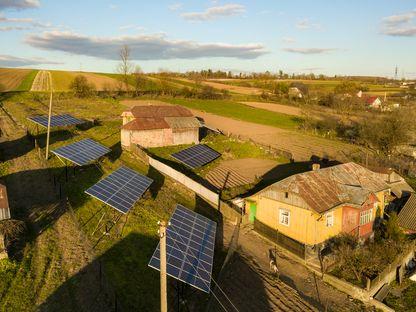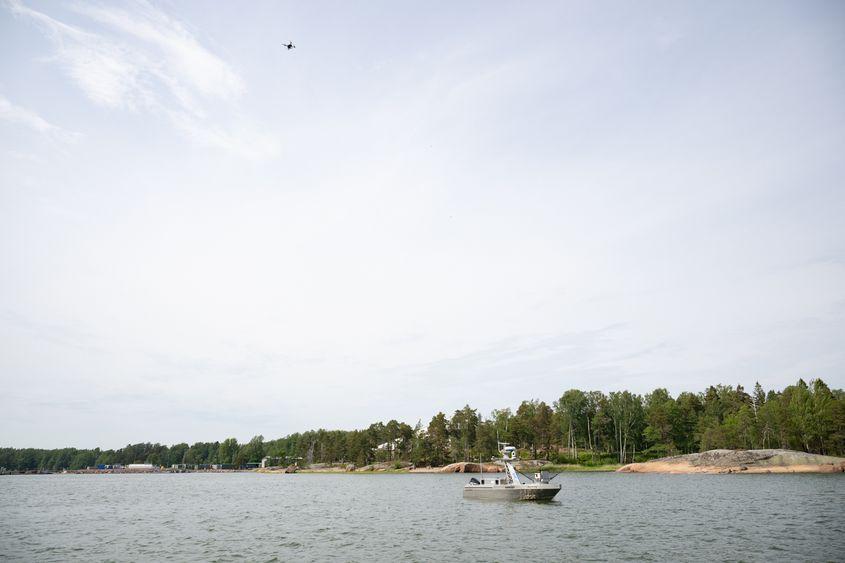
Nava de cercetare Alliance a NATO. Foto: Carolina Drüten
24/06/2025
Why Romania is watching NATO’s Baltic experiment closely
In the Baltic Sea, NATO is testing drones, sensors, and AI to detect attacks on pipelines and data cables at an early stage. The exercise is not just a technical innovation – it also represents a major strategic shift that is set to be formally adopted at the summit in The Hague. It will have significant implications for the Black Sea.
Baltic Sea, a few dozen kilometers off the coast of Helsinki. Beneath the hull of a ship drifting motionless, a glider drone is floating. It registers every sound and sends all collected data to an operations center. It knows that the ship has been hovering above critical infrastructure for some time. Directly beneath it runs a gas pipeline.
An anchor, deliberately dropped and dragged along the seabed, could damage it – and disrupt Europe’s energy supply.
The glider drone is the ear of a surveillance system. At the surface, the eye approaches: a robotic boat carrying a tethered aerial drone. It identifies suspicious vessels from the air. If the captain shows signs of dropping anchor, he can be warned via radio. In a serious case, a frigate is alerted and dispatched to the scene.
This is the kind of scenario NATO is currently simulating in the Baltic Sea. The ship does not belong to the Russian shadow fleet but to the Alliance itself: the "Alliance" is a research vessel where military personnel and scientists are testing new technologies – among them unmanned systems, sensors, and AI applications. Their goal: to better protect Europe's vulnerable underwater infrastructure.
This is about both technology and speed. The exercise, called "Task Force X Baltic," signals a shift in how NATO handles procurement. For the first time, the Alliance is directly testing commercially available systems under real conditions – and aims to integrate successful ones into the military as quickly as possible. Put differently: instead of defining needs first and then waiting years for custom-built solutions, NATO is looking at what’s already available and finding out what it can be used for. This approach is meant to be faster, more flexible, and more cost-effective. It will be formally adopted at the NATO summit in The Hague as a guiding principle for future innovation and procurement.
The current exercise in the Baltic Sea is part of a broader response to a threat that has long become reality. Ninety-nine percent of global data traffic runs through undersea cables. Without them, there would be no financial trading, no communication. In addition, there are power cables and gas pipelines. And they are vulnerable: Russia has them in its sights. As early as 2023, former President Dmitry Medvedev wrote publicly on Telegram that Russia had "no, not even any moral restrictions preventing us from destroying the undersea cable connections of our enemies." Since the 1960s, Moscow has pursued intensive and institutionalized deep-sea research and developed capabilities that NATO has neglected for decades. Now it has to catch up.
Mulți ne citesc, puțini ne susțin. Fără ajutorul tău, nu putem continua să scriem astfel de articole. Cu doar 5 euro pe lună ne poți ajuta mai mult decât crezi și poți face diferența chiar acum!
„In the past 25 years, Western naval forces have focused on entirely different missions: combating piracy off Africa, sea rescue in the Mediterranean, anti-terror operations,” says Sebastian Bruns, an expert in maritime strategy and security at the Institute for Security Policy at Kiel University. During the Iraq and Afghanistan campaigns, many naval resources were redirected elsewhere. „Capabilities like anti-submarine warfare or underwater operations were neglected because they simply weren’t needed,” Bruns says. „Russia – and China too – recognized that gap and expanded precisely those capabilities.”
Navigation of the WAMV22 - 4assets , Ocean Power Technology Cie (USA) on the occasion of the Dynamic Messenger NATO exercise in the Upinniemi naval Base (Finland), 16th June 2025.
Today, that policy is coming back to haunt NATO. The Baltic Sea has already become the scene of suspected sabotage. In October 2023, the Balticconnector gas pipeline and several data cables between Finland and Estonia were damaged. In November, the internet connection between Gotland and Lithuania and the C-Lion 1 telecom cable between Finland and Germany were affected. In December 2024, additional damage occurred – this time to the EstLink2 power cable between Estonia and Finland, and again to multiple data cables.
Determining the cause is often difficult. Several thousand merchant ships cross the Baltic every day. Fishing vessels and anchors are responsible for a large share of the damage to critical underwater infrastructure. That makes it easy for aggressors to hide in plain sight. So far, sabotage has been relatively simple, low-cost, and largely without consequences.
Flight of the TETHRED UAV (6 assets) Hoverfly Cie (USA) launched from the RELENTLESS (21 feet - 6 assets) Metal Shark Cie, on the occasion of the Dynamic Messenger NATO exercise in the Upinniemi naval Base (Finland), 16th June 2025.
Coal Mining Expansion Leads to Deforestation: Over 470 Hectares of Forest Cut Down in Gorj, Romania
Over the past six years, more than 470 hectares of national forest land have been allocated by the government, without compensation, to the Oltenia Energy Complex (CEO) for the expansion or opening of new coal mines.
The not-so-green Romania. The state delays settlements for photovoltaic panels by 2 years
PressOne reviews the main dysfunctions in the production, consumption and distribution of energy from renewable sources, as revealed by discussions with consumers and data provided by official sources at the request of our editorial office.
NATO wants to change that. It is relying on a combination of traditional and unmanned systems intended to turn the Baltic into a kind of transparent sea. A NATO official expects a „deterrent effect.” The calculation: if potential attackers know they are being watched, they may be discouraged from attempting sabotage. Such attacks don’t just cause financial damage – they also derive their power from uncertainty about who is behind them, and the public unease that follows.
Those who are not caught cannot be held accountable. But sabotage of Western undersea infrastructure can have serious security consequences. „Even in the case of a hybrid operation, Article 5 consultations could be triggered – if the incident can be clearly attributed,” says the NATO official.
What those conditions would be remains intentionally vague. NATO wants to keep adversaries guessing. Eero Kytömaa, a national security adviser at the Finnish Ministry of the Interior, suggests a „noticeable deterioration of normal living conditions in a NATO member state” could be one possible trigger for such discussions.
Un newsletter pentru cititori curioși și inteligenți.
Sunt curios
Flight of the TETHRED UAV (6 assets) Hoverfly Cie (USA) launched from the RELENTLESS (21 feet - 6 assets) Metal Shark Cie, on the occasion of the Dynamic Messenger NATO exercise in the Upinniemi naval Base (Finland), 16th June 2025.
Meanwhile, NATO member states are struggling to keep up with rapid developments. The use of novel systems such as fiber-optic drones in the Ukraine war shows: those who learn faster, win. In the past, procurement followed a rigid process. Armed forces defined their needs and then waited five to ten years for delivery. „Today, it’s the other way around,” says David Portal, who is responsible for exercises and training at NATO’s Allied Maritime Command (MARCOM). The approach now: see what the market offers, test it in operational settings, and find out what it's good for.
NATO is recommending the systems currently being tested in the Baltic to its member states. In a first step, they can be ordered by the eight countries bordering the Baltic Sea, as well as Belgium, the Netherlands, France, and Norway. Delivery is expected within a year. The concept is then to be expanded to other environments – such as the Atlantic, the Black Sea, and the Mediterranean – and to additional NATO members. The corresponding master plan, titled „Rapid Adoption Action Plan,” is set to be adopted at the upcoming summit in The Hague.
This development will also have important consequences for the Black Sea region. „There are additional allied nations waiting in the wings,” says Simon Purton, NATO Allied Command Transformation's (ACT) Innovation Branch Head. Turkey, Romania, and Bulgaria have expressed interest in using the new technology in the Black Sea, according to him.
Flight of the TETHRED UAV (6 assets) Hoverfly Cie (USA) on the RELENTLESS (21 feet - 6 assets) Metal Shark Cie, on the occasion of the Dynamic Messenger NATO exercise in the Upinniemi naval Base (Finland), 16th June 2025.
Closer cooperation between these three countries is already emerging. Three think tanks – the Romanian New Strategy Center, the Bulgarian Sofia Security Forum, and the Turkish EDAM – recently presented a joint study to NATO. In it, the authors call for an expansion of the existing trilateral cooperation in mine countermeasures, particularly to protect critical maritime infrastructure such as gas platforms, undersea cables, and pipelines. Projects mentioned include Romania’s Neptun Deep and Midia.
The backdrop is the growing threat from Russia, which is deliberately sowing uncertainty in the Black Sea using both hybrid and military means: Russian forces are blocking maritime areas within other countries’ exclusive economic zones, laying mines across large swaths of the sea, disrupting GPS signals, and deploying espionage and sabotage tactics. As a result, key energy and data projects are stalling, and investors are pulling out.
Politically, the call for closer Romanian-Turkish-Bulgarian cooperation is gaining traction. At the Antalya Diplomacy Forum in April, Romanian and Bulgarian foreign ministers Emil Hurezeanu and Georg Georgiev, together with Turkish Deputy Foreign Minister Zeki Levent Gümrükçü, shared a panel and clearly supported expanding protective measures. At the technical level, talks between the three navies are already underway.
Meanwhile, movement is also visible at the EU level: the Commission is working on a Black Sea strategy that includes a regional center for maritime security – with Romania as a possible location, and involving other partners such as Georgia, Moldova, and Ukraine. The goal is to protect critical infrastructure, clear mines, and ensure long-term freedom of navigation.
In conversations with NATO officials, it becomes clear just how seriously the threat from Russia is being taken. The exercise in the Baltic Sea is meant to prepare for real scenarios – technologically and structurally. All involved know that sabotage of undersea infrastructure can never be entirely prevented. But that’s not the goal. The point is to ensure the perpetrators don’t go unseen.
This text is part of a series of articles proposed by TEFI, a cross-border editorial project developed by some of the most powerful newsrooms in Central and Eastern Europe: Gazeta Wyborcza (Poland), Magyar Jeti / 444 (Hungary), SME (Slovakia), Bellingcat (Netherlands), PressOne (Romania), united in a consortium funded by European funds, aiming to promote topics related to national and regional security.

Avem nevoie de ajutorul tău!
Mulți ne citesc, puțini ne susțin. Asta e realitatea. Dar jurnalismul independent și de serviciu public nu se face cu aer, nici cu încurajări, și mai ales nici cu bani de la partide, politicieni sau industriile care creează dependență. Se face, în primul rând, cu bani de la cititori, adică de cei care sunt informați corect, cu mari eforturi, de puținii jurnaliști corecți care au mai rămas în România.
De aceea, este vital pentru noi să fim susținuți de cititorii noștri.
Dacă ne susții cu o sumă mică pe lună sau prin redirecționarea a 3.5% din impozitul tău pe venit, noi vom putea să-ți oferim în continuare jurnalism independent, onest, care merge în profunzime, să ne continuăm lupta contra corupției, plagiatelor, dezinformării, poluării, să facem reportaje imersive despre România reală și să scriem despre oamenii care o transformă în bine. Să dăm zgomotul la o parte și să-ți arătăm ce merită cu adevărat știut din ce se întâmplă în jur.
Ne poți ajuta chiar acum. Orice sumă contează, dar faptul că devii și rămâi abonat PressOne face toată diferența. Poți folosi direct caseta de mai jos sau accesa pagina Susține pentru alte modalități în care ne poți sprijini.
Vrei să ne ajuți? Orice sumă contează.
Share this


